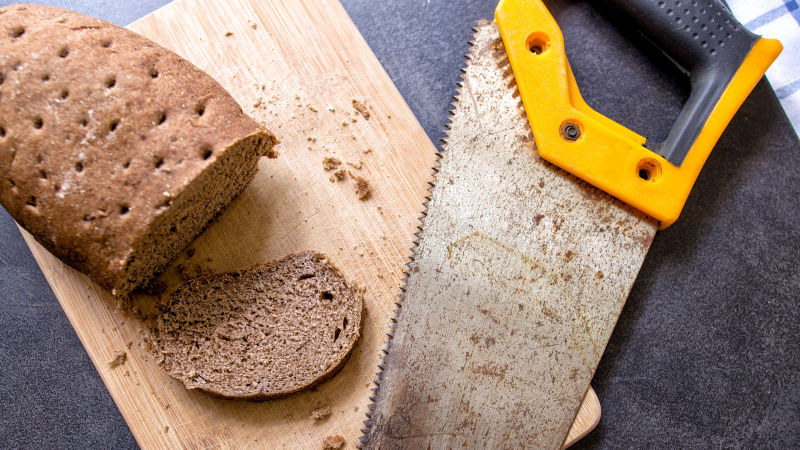I was pondering the chemistry of stale bread the other day when I decided to see what science I could find on it. This excellent article popped up.
A fresh-baked loaf of bread is one of life’s great pleasures. The soft interior is open and airy, each bite yielding with just a touch of resistance. The exterior is all crust, a crisp and crackly delight contrasting in both texture and flavor. This balance is fleeting, though. Straight from the oven it’s at its best, but with every minute that passes, that loaf moves one step further toward crouton, hard-tack, and hockey puck. Why must nature be so cruel? Why does all bread go stale?
It’s tempting to believe that stale bread is simply dry bread and that efforts to keep it moist can stave off this sad fate. The real culprit, though, is a subtle chemical change that alters the food’s structure on a molecular level. This process—called starch retrogradation—turns bread’s texture leathery and gritty, and it makes the loaf taste dry (whether the moisture has really evaporated or not). Though this can’t be stopped completely, it can sometimes be slowed or reversed. Let’s look a little deeper.
Source: How to revive stale bread
